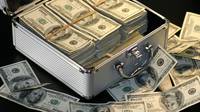
The Philippine Economy and Its Contemporary Problems and Issues
The Philippines, like many nations of the world, is a mixed economy. While it manifests capitalist market economy in its cities and more advanced municipalities and a command economy most especially in its major industries like energy and transport, the agricultural and subsistence economy persist among its barrio folks and indigenous groups. The Philippines is in a transition stage from an agricultural to an industrial economy. Land-ownership is still concentrated in the hands of a few. Statistics show that a high proportion of rural households live below the poverty line. The Philippines has vast natural resources but the economy is basically extractive and its population has substandard levels of living. Thus the Filipinos have been aporically described as “beggars sitting on top of a mountain of gold.”
Issues and problems that confront contemporary Philippine economy include the following:
- Defects in the economic structure, such as great disparity in the distribution of wealth and material goods; gross inefficiency and lack of dynamism of the manufacturing sector and the subsequent persistent balance of payments deficits and recurrent huge public sector deficits as a major problem.
- Slow economic growth and rapidly rising population make it difficult to expand education and health services and improve their quality.
- Government reliance on and support of foreign investors, MNC’s and foreign debts and foreign aid.
- Lack of political will on the part of government to support local entrepreneurs and develop local industries as well as to assert its self-determination by promoting Filipino First and protectionism policy
- Low real wages and little job opportunities
- Huge foreign and domestic debts
- Bureaucracy and massive graft and corruption in government.
- Inefficient tax collection, tax evasion, tax credits and tax holidays given to foreign investors rob the nation of needed revenues.
- Colonial mentality of the people to patronize foreign goods rather than their locally made products.
- Economic instability brought about by peso devaluation, political instability, and high cost of gasoline and crude oil products, military threats, coups d’ etat, and unstable peace and order situation in the country.
- Unemployment and underemployment.
Government Solutions to the Economic Problems
The government institutes the following solutions to the economic problems:
- Among the plans/programs that aim to make the Philippine economy grow is the conversion of the former American naval base, Subic Naval Base into a free port zone under the management of the Subic Bay Metropolitan Authority (SBMA).
- Inviting foreign investors to set up business in the country and providing incentives, such as tax breaks, tax credits, and tax holidays.
- Organized livelihood projects to help the poor be self-reliant.
- Entering into treaties and joint ventures agreements with foreign nationals and foreign corporations in the exploration and development of our natural resources.
- Opening the Philippine markets to world commerce, import liberalization policy, lifting of protectionist policies, and adherence to the idea of globalization.
- More foreign debts and foreign aids from the World Bank and the IMF to solve budget deficits.
- Privatization and commercialization of government-owned or controlled corporations.
- Joining in treaties and agreements with world trade bodies whose goals and objectives are advantageous to the more technological advanced economies. Example: WTO, APEC, GATT, etc.
- Imposing dictatorship or strong presidency to control political and economic power.
Nationalist Alternatives
Filipino nationalists suggest the following alternatives as solutions to the economic problems:
- Governmental support to local entrepreneurs and development of local industries.
- Industrialization of agriculture
- Development of the national steel industry.
- Provision of real wages and profit sharing in business.
- Free education for all through state-funded education and more emphasis on science and technology and mathematics.
- Countryside development and regional development
- Moratorium on payment of foreign debts repudiation on those debts which were not used for public welfare.
- Intensive and more efficient tax collection especially among big-time tax evaders and erring corporations.
- Political will to stop graft and corruption in government
- Protectionism policy and governmental regulations on prices of commodities.
- Campaigns on Filipino First Policy, patronizing local goods and product, and pride in being a Filipino.
- Strict adherence to the constitutional provision on the exploitation of our natural resources.
- A realistic appraisal of the costs and benefits of dealing with MNC’s in a pragmatic context and where these are advantageous to both.
- For the Philippines to be truly self-reliant the government should enact foolproof laws against the abuses of the MNC’s and TNC’s and recognizing only legitimate and fair foreign trade.
- A planned economy based on a grand strategy as to which industries should be supported and which to be abandoned and involving close control over the standards of living, employment and minimal inflation.
- Genuine land reform
- More trade and commercial relations with Asian neighbour countries.

















